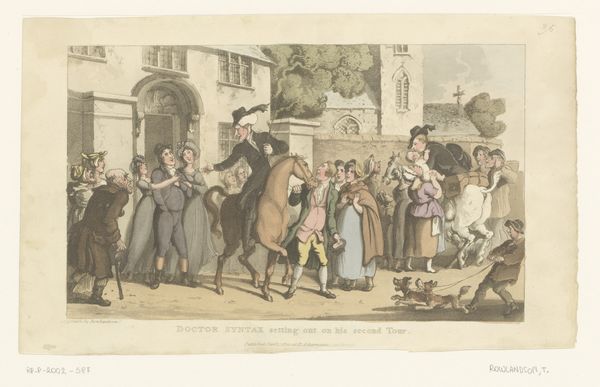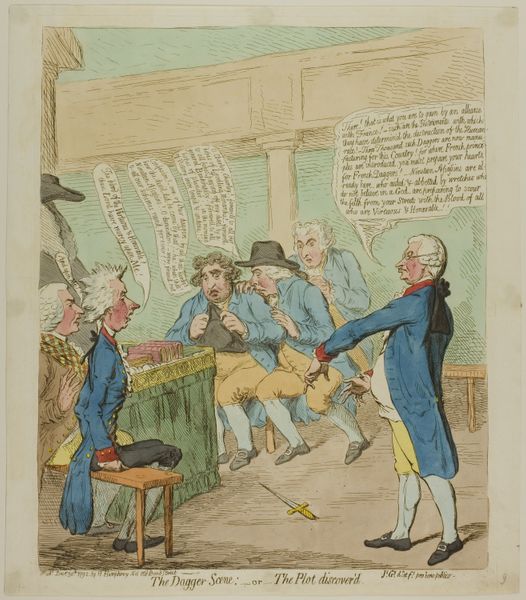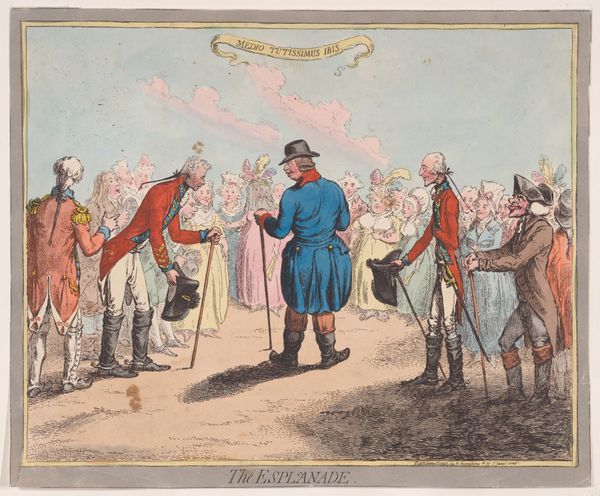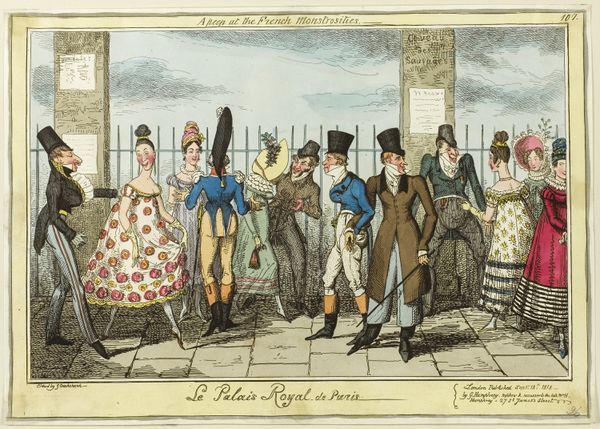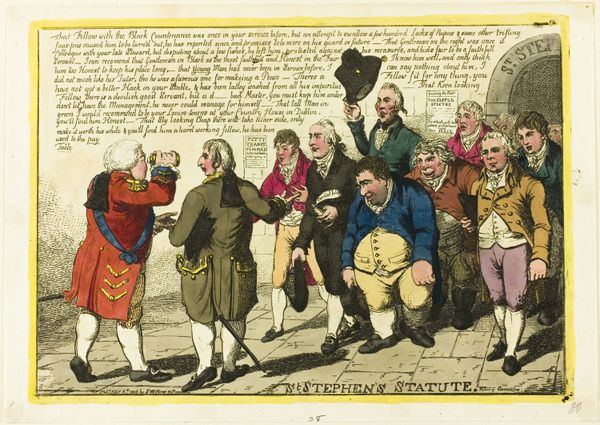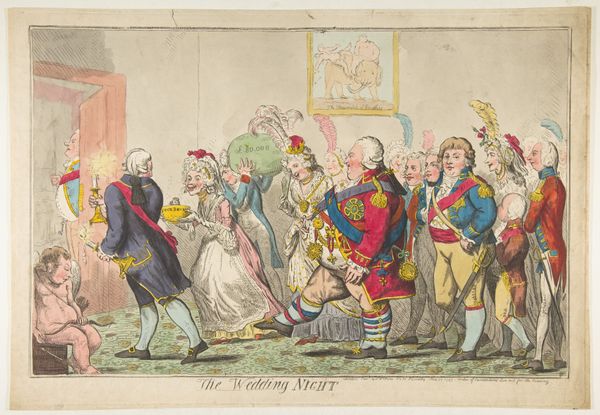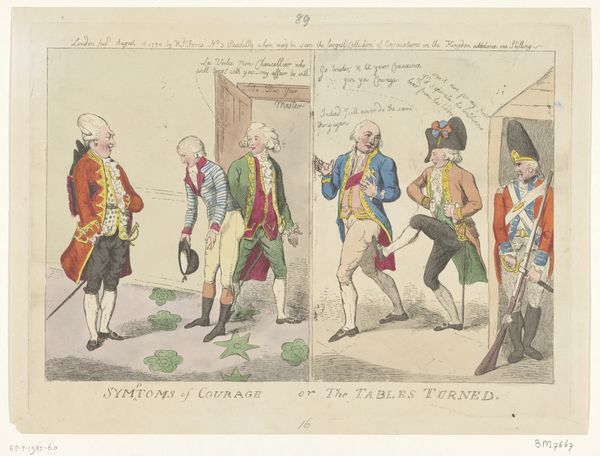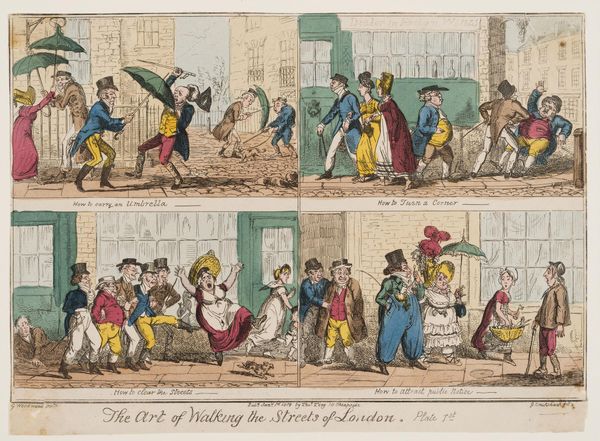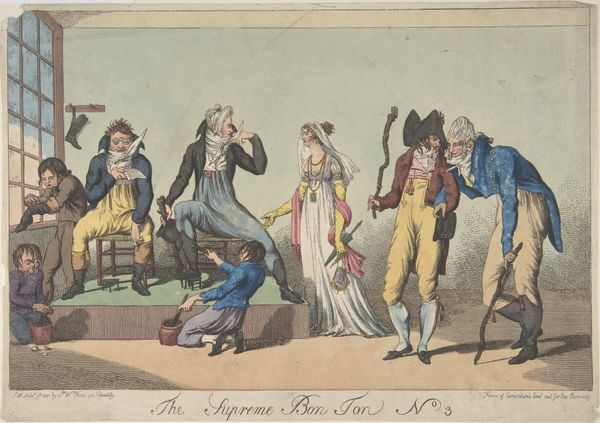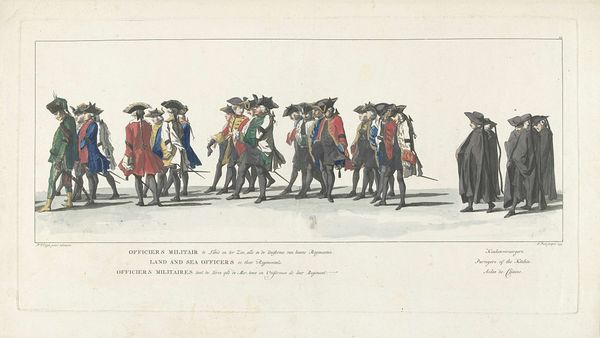
drawing, print, etching, paper
#
drawing
#
neoclacissism
# print
#
etching
#
caricature
#
paper
#
genre-painting
#
history-painting
Dimensions: 237 × 347 mm (image); 255 × 355 mm (plate); 272 × 380 mm (sheet)
Copyright: Public Domain
Curator: Looking at James Gillray's etching, "Integrity Retiring from Office," probably from 1801, my immediate feeling is... chaos. Controlled chaos, perhaps, but the scene teems with such a raucous energy. What do you see? Editor: Absolutely! It’s an orchestrated departure from political grace. Gillray’s caricatures pack a punch. You see the figures leaving the “Treasury,” but the enraged mob to the left really foregrounds the critique of power. The piece engages with the politics of its time, specifically the Pitt administration. Curator: Right, the way the angry mob seems to literally be throwing the establishment out the door... it’s visually so literal, isn't it? Like a stage play in a miniature, etched world. I can almost hear the shouting! The level of detail for such a small print is astounding; the falling objects each tell their own little story. Editor: And these 'little stories' connect with wider socio-political themes of the time. Look at the documents carried by the figures being escorted out; they reference specific controversies of the administration and corruption allegations. Integrity—or the lack thereof—is the subject, no? Gillray is less concerned with objective history and more with shaping public opinion. Curator: Precisely. He turns a mirror—or perhaps a funhouse mirror—on the establishment. Is there a figure that particularly grabs your attention? For me, it's that stoic guard blocking the mob, completely unfazed, yet still somehow absurd. Editor: The guard’s presence indeed heightens the sense of irony, that’s clear. Gillray critiques how structures of authority perpetuate, even when integrity is seemingly absent. These satirical pieces often expose hypocrisy... Curator: Yes! To laugh is to critique, as they say. I find the raw expressiveness remarkable, the fact that ink on paper from over two centuries ago can still elicit a reaction, spark a debate. Editor: Definitely. By placing the print within the historical context, analyzing its satirical elements and power dynamics, we see how relevant this is to today. Curator: And just like that, a little window into the past illuminates our present. Editor: Exactly. Thanks for taking the time to unravel all this.
Comments
No comments
Be the first to comment and join the conversation on the ultimate creative platform.

